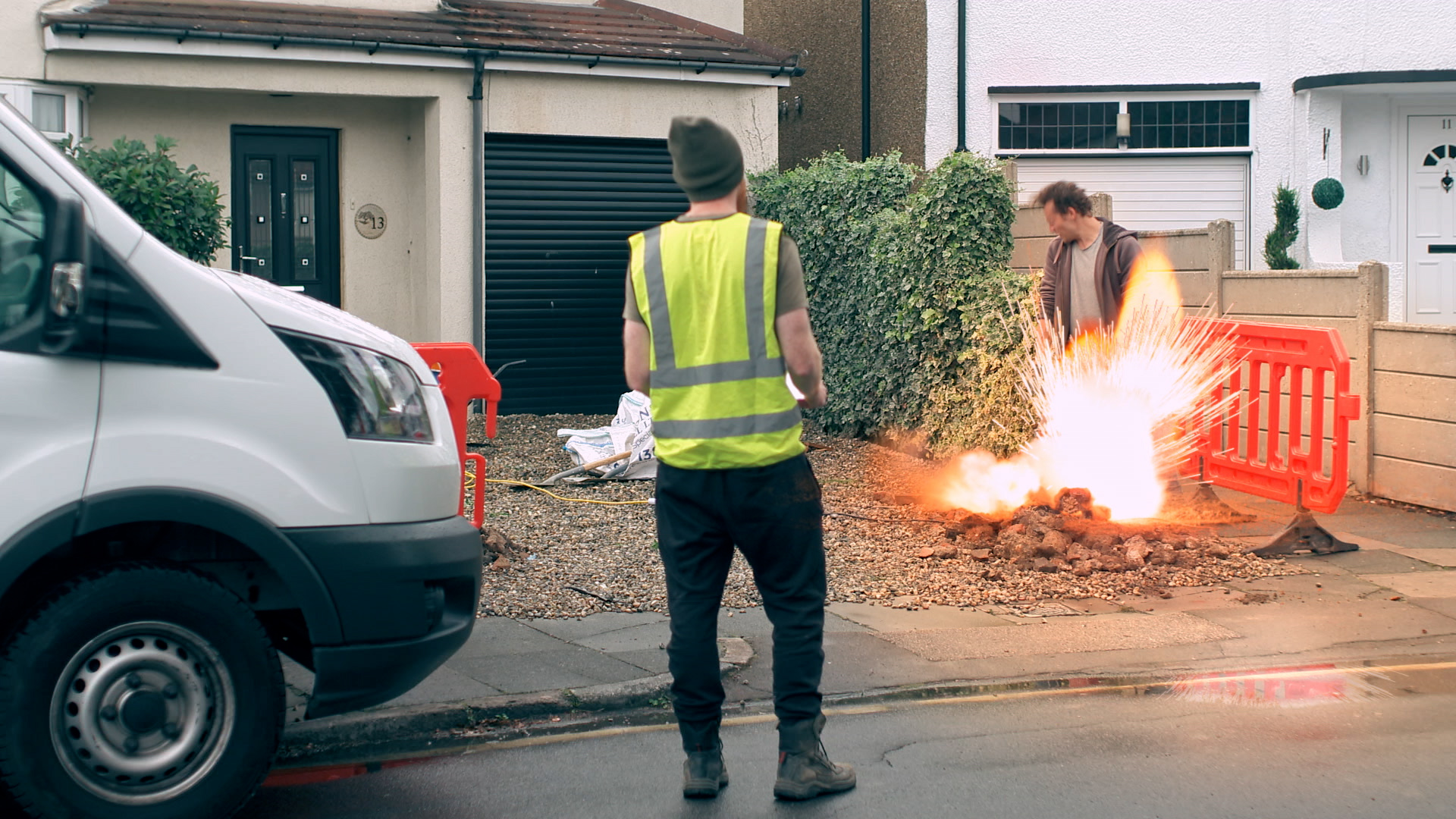- In the last five years, 354 people have suffered life changing injuries after striking a live underground electricity cable
- Construction workers identified as extreme risk with 4 out of 5 reported incidents involving a tradesperson
- Research reveals nearly a third (31%) of tradespeople do not always check for underground cables
- Incidents have increased by as much as 30% in some places since the national lockdown ended
- The Energy Networks Association releases new emotive safety film, urging people to ‘Think Before You Dig’
New research released today by Energy Networks Association (ENA) reveals construction workers are risking their lives as nearly a third (31%) fail to check for underground electricity cables when digging on site.
Since 2015, an average of 70 people a year are seriously injured as a result of contact with underground electricity cables. Nearly half of all cases (47%) were reported on public highways, construction sites and industrial buildings making tradespeople at extreme risk of serious injury in the workplace. *
When surveyed, 93% of construction workers and industry professionals believe they always dig safely, yet almost a third (31%) admitted to not always checking for underground electricity cables before beginning work.
Despite the threat to life, the main reasons tradespeople fail to check for underground electricity cables is because they don’t believe it’s their responsibility (15%), or they don’t think they’ll dig deep enough to hit anything (24%).
Underground services can be found and disturbed during street works, road works, excavations, drilling and piling, demolition and site remediation, site investigations and any other work that involves penetrating the ground. These cables can run at any depth below surface level and carry voltages ranging from 230 volts (domestic voltage) and upwards.
Worryingly, almost one in six (15%) say if they uncovered an underground electricity cable encased in concrete, they would attempt to break them out, which could put them at immediate risk of life-threatening injuries.
This failure to check for underground services during these excavations has led to a 20-30% increase in incidents across the UK. These strikes to cables and pipes can lead to a significant risk to those working on the affected sites.
To help prevent the number of fatalities and injuries amongst tradespeople, ENA has launched a new emotive safety film, urging those working in construction to ‘Think Before You Dig’. The thought-provoking film showcases the dangers of working near underground electricity cables, following the story of a construction worker and the devastating emotional and physical impact an accident can have.
Peter Vujanic, Chair of ENA’s Public Safety Committee says: “It’s extremely concerning to hear that even though construction workers are one of the most-at-risk groups of injury involving underground electricity cables, more than one in four fail to check for cables before beginning work. With the proper education and support, these issues can be addressed and, ultimately, lives can be saved.
“That is why we have created a new safety film, to help remind tradespeople of the dangers involved when working near underground electricity cables, urging those in construction and similar industries to Think Before You Dig.”
While a worrying number of construction workers admit to sometimes neglecting health and safety advice when working near underground electricity cables, the majority were confident in what to do when faced with an emergency. In the event of uncovering an underground cable, over half (56%) say they would contact their electricity network operator to ensure they are deenergised.
Think Before You Dig: How to stay safe working near underground electricity cables
In addition to the short film, ENA has also released a new set of Plan, Scan, Think Before You Dig, life-saving safety guidelines targeted towards industry professionals whose work may take place near underground electricity cables:
- Plan ahead – Always be mindful of what services lie below ground when digging or excavating. Ask utility companies for plans in advance.
- Assess the risks – Identify the dangers and hazards associated with excavations and put controls in place to manage them.
- Scan and locate – Take care when digging, always locate underground cables before digging with the use of cable avoidance tools.
- First, use your hands – Before using any electric or mechanical excavation tool, you must consider hand-digging trial holes to expose the services
- Always assume, that underground cables are live even when damaged.
- Know who to call – In case of an emergency dial 999 and tell them electricity is involved. Call 105 if you have a safety concern related to the electricity network or if you spot damage to underground cables and substations that could put you, or someone else, in danger.
- Think Before You Dig
For more information on underground cables and how to work safely near them, please visit the Energy Networks Association website at: www.energynetworks.org/thinkbeforeyoudig

